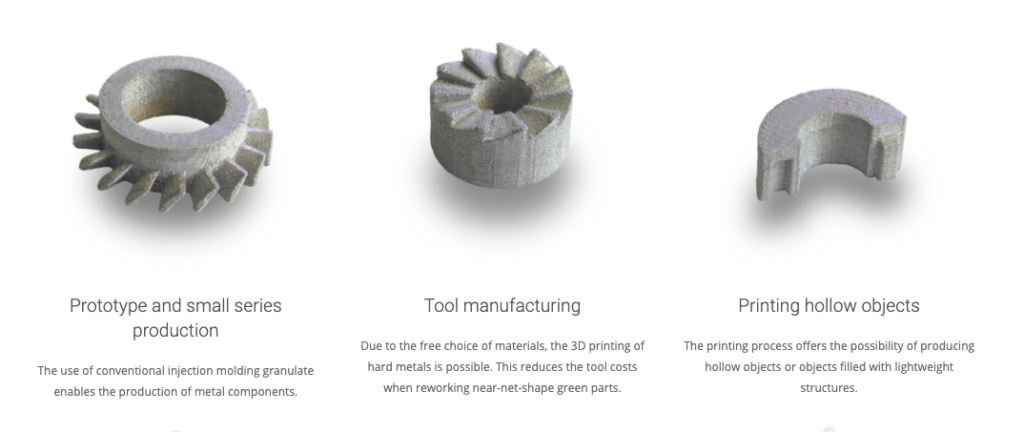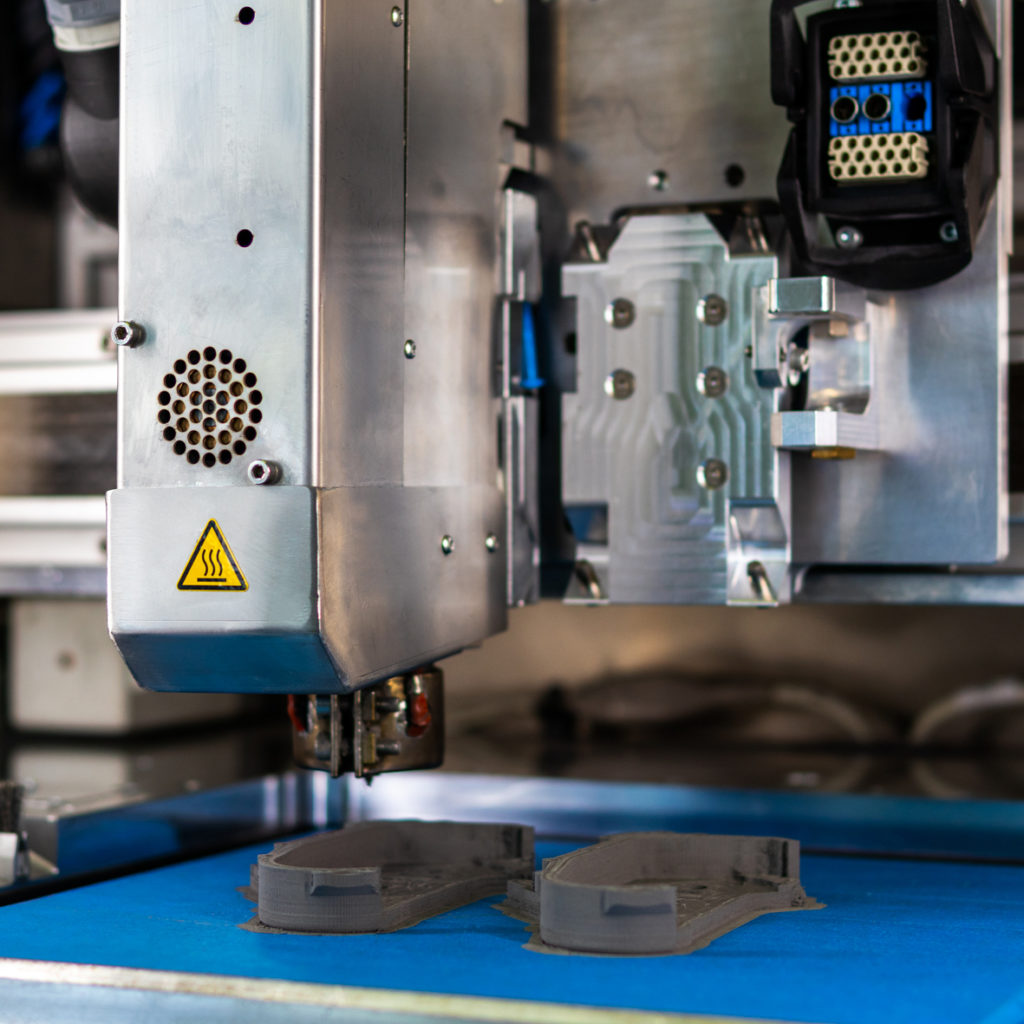Germany-based manufacturer of multi-material printers, AIM3D, developed their next generation of print heads in the first half of 2021. The new CEM-E2 extruder, like its predecessor, is able to print metal, ceramic, and plastic, now the added benefits of improved delivery accuracy along with a 200% increase in extrusion speed resulting in a print with higher surface quality and more desirable mechanical properties. The extruder is made for the company’s proprietary composite extrusion method (CEM), a printing method resembling bound metal extrusion except using metal or ceramic pellets instead of bound metal rods.
AIM3D is a spin-off company from the University of Rostock with the goal of revolutionizing the metal 3D printing sector by drastically reducing the cost of additive manufacturing metal parts. Their guiding principle has been to create printers that are not dependent on its own ecosystem but rather are able to work with standardized industry materials. The result is a printer that can process a constant supply of nearly any type of granular material, whether it be stainless steel, hard metals, non-ferrous metals, ceramics, or plastics like ABS or PLA.
Their proprietary extrusion process closely resembles bound metal extrusion, a subsegment of bound metal printing, which SmarTech Analysis predicts to have nearly twice the growth rate than the overall metal 3D printing market over the next ten years. Bound metal extrusion is promising in that it does not rely on loose powder, but instead powder bound by waxy polymer.
Bound metal rods or pellets are much safer to use, can be handled by hand, and do not require all of the hazardous precautions that loose powder machines need. The feedstock is extruded through a nozzle, as in standard fused filament fabrication (FFF), leaving a part made of metal powder covered in waxy polymer. Then the polymer is dissolved in a wash before the component is sintered whole. Bound metal extrusion printers are significantly cheaper than other types of metal 3D printers and can be made to combine all three steps in an office friendly product.
AIM3D’s CEM is the same process except that it uses reinforced injection molding pellets, allowing customers to use the entire available catalogue of cost-efficient industrial pellets and opening up to a wider range of materials and suppliers. Injection molding pellets benefit from the design freedom of additive manufacturing without the need for molds. In turn, the CEM process reduces costs associated with material and machinery. Moreover, CEM’s equipment makes it possible to having one printer to handle metal, ceramic, and plastic.
The CEM-E2 extruder prints a higher quality product with improved accuracy. AIM3D states that the extrusion speed has more than quadrupled and can now manufacture rates of up to 220 cm3/h with a 0.4 mm nozzle.
CTO of AIM3D, Clemens Lieberwirth says, “The material feed as well as an optional water cooling system and an improved holder for the quick-change system are all new developments. The patented CEM-E2 extruder with its parameters tailored to specific materials sets new standards in the CEM processes.”
AIM3D has successfully used the new extruder to print a coolant manifold for automotive and aerospace company Shaeffler Group. PPS GF 40 was used as the printing material which provides high flame retardancy and the possibility to program conductivity, thermal expansion, and friction behavior. PPS is not widely available as a filament, but the pellets show potential as a 3D printing material.
Clemens Lieberwirth added, “A direct comparison between PPS in filament and in pellet form shows there are very significant cost advantages of the pellets as well as considerably higher build rates. The manufacturing costs alone for the component (machine hours + material) are around €70, printing time is around 12 hours. Filament printers would need at least 50 hours with the same layer thickness (50 µm).”
The company is currently developing larger pellet 3D printers to print larger parts at even higher build rates, which they plan to launch at Formnext 2021 in Frankfurt, Germany.
Subscribe to Our Email Newsletter
Stay up-to-date on all the latest news from the 3D printing industry and receive information and offers from third party vendors.
You May Also Like
Gorilla Sports GE’s First 3D Printed Titanium Cast
How do you help a gorilla with a broken arm? Sounds like the start of a bad joke a zookeeper might tell, but it’s an actual dilemma recently faced by...
Nylon 3D Printed Parts Made More Functional with Coatings & Colors
Parts 3D printed from polyamide (PA, Nylon) 12 using powder bed fusion (PBF) are a mainstay in the additive manufacturing (AM) industry. While post-finishing processes have improved the porosity of...
$25M to Back Sintavia’s Largest Expansion of Metal 3D Printing Capacity Since 2019
Sintavia, the digital manufacturing company specializing in mission-critical parts for strategic sectors, announced a $25 million investment to increase its production capacity, the largest expansion to its operations since 2019....
Velo3D Initiates Public Offering in a Bid to Strengthen Financial Foundations and Drive Future Growth
Velo3D (NYSE: VLD) has been among a number of publicly traded 3D printing firms that have attempted to weather the current macroeconomic climate. After posting a challenging financial report for 2023,...


































